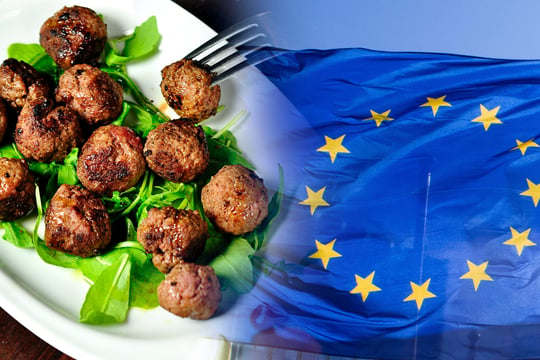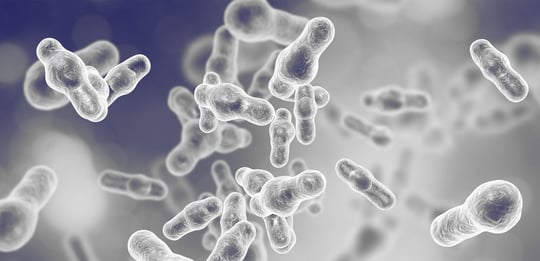
The recently published US National Security Commission on Emerging Biotechnology (NSCEB) report has intensified discussions around the global biotech landscape. Released on April 8, 2025, the report acknowledges China’s rapid rise in biotechnology and urgently calls for the US to reinforce its leadership. But where does Europe stand in this high-stakes competition, and what strategic moves should it make to remain relevant?
Key takeaways from the US NSCEB Report
The NSCEB identifies six strategic pillars to maintain US competitiveness:
1. Prioritise biotechnology at the national level
-
- Establish centralised coordination through a National Biotechnology Coordination Office and integrate biotechnology into national strategic planning.
-
- Simplify regulations, attract private capital, and protect critical infrastructure to accelerate commercialisation.
3. Maximize the benefits of biotechnology and defence
-
- Define ethical principles for defense applications and ensure biotechnology is effectively fielded across military operations.
4. Out-innovate strategic competitors
-
- Treat biological data as a strategic resource, launch grand research challenges, and protect against adversarial exploitation.
5. Build the biotechnology workforce of the future
-
- Equip the government with necessary expertise, support nationwide job creation, and attract trusted foreign talent.
6. Mobilise the collective strengths of allies and partners
-
- Promote biotechnology collaboration and protection with international allies.
- Foster global partnerships – establish partnerships with leading biotech nations to drive global innovation.
Actions taken by the current US Administration
However, on March 14, 2025, President Trump signed Executive order (EO) 14236, which rescinded 19 executive actions, including former President Biden’s EO 14081, "Advancing Biotechnology and Biomanufacturing Innovation for a Sustainable, Safe, and Secure American Bioeconomy". This revocation marked a significant shift in the administration's approach to biotechnology, focusing on reducing federal involvement in biotech initiatives.
Health and Human Services Secretary Robert F. Kennedy Jr. is taking significant steps to revise the FDA's Substances Generally Recognized as Safe (GRAS) rule. On March 10, 2025, Kennedy directed the FDA to explore rulemaking to eliminate the self-affirmed GRAS pathway. Eliminating GRAS would lengthen time-to-market for new products, possibly raise compliance costs due to more extensive toxicological testing and documentation, and disproportionately impact startups and small firms that rely on GRAS for rapid innovation.
In addition, in late March 2025, Robert F. Kennedy Jr. announced 10,000 layoffs across the federal health department, including 3,500 full-time FDA employees. These cuts, although partly reversed, have impacted the FDA's ability to conduct drug and food safety inspections effectively.
Europe's strategic response
Europe, too, is keenly aware of the importance of biotechnology for its economic growth, sustainability, and innovation. The European Commission's upcoming Strategy for European Life Sciences and the EU Biotech and Biomanufacturing Initiative are pivotal steps in this direction. The EU Biotech and Biomanufacturing Initiative was published on March 20, 2024. Several actions are currently ongoing, including a regulatory reform process, with a comprehensive study currently underway. Additionally, an EU Biotech Hub, launched on January 30, 2025, aims to guide biotech companies through regulatory and market complexities. The EU is also preparing regulatory sandboxes to allow safe, real-world testing of innovative biotech applications.
On the investment front, the Commission is actively analysing barriers to biotech financing, with a focus on improving fund consolidation and infrastructure. At the same time, it is pushing for dedicated biotech challenges to be included in the European Innovation Council's 2025 funding programs to better align research support with market needs.
What could be done to facilitate innovation and market access of new food products?
At Biosafe, regulatory clarity and practicality are core to our approach. From our professional viewpoint, we suggest two essential improvements to facilitate biotech innovation and market access in the EU:
1. Reconsider the Transparency Regulation
-
- Although the aim of Regulation (EU) 2019/1381 on Transparency in the food chain was to increase transparency, it is limited to non-confidential information. Not all information and the basis of risk assessment are public, and indeed, not everything should be. The industry should trust that no proprietary information is exposed, and the will to support biotechnology should not be undermined by disproportionate regulatory requirements. The transparency regulation has not truly increased transparency or trust in risk assessment, nor has it improved product safety. The public has not actively engaged in consultations concerning applications, not even on GMOs.
- The regulation also prohibits EFSA from giving scientific advice to applicants for their product testing to ensure the independence and neutrality of the scientific panels. However, there is a great demand from the industry for more help and increased predictability in safety assessment requirements. One could question the need for a Transparency Regulation that has brought massive administrative workload for both EFSA and applicants but no improvement in food safety. Has the regulation improved public trust in risk assessment, and could there be better ways to reach that goal?
2. Modernize Rules for Genetically Modified Microorganisms (GMMs)
-
- While the European Commission has adopted a proposal for plants produced by new genomic techniques (NGT), exempting NGT plants that meet certain criteria from the requirements of GMO legislation, NGT technologies are already a reality in industrial microorganisms. Therefore, there is an urgent need to ensure that GMO microorganisms are not left without their own regulation, facilitating the development of safer and more efficient strains. For example, NGTs could be used to knock out antibiotic resistance genes.
Europe’s biotech moment
With the US regulatory environment increasingly uncertain and China advancing swiftly, Europe must seize this critical moment. Simplifying regulations, investing strategically, and clearly defining biotech guidelines can position Europe at the forefront of biotech innovation.
Europe has all the ingredients to become a global biotechnology leader. Now it’s time for bold, practical, and decisive action.
How Biosafe can help you stay ahead
With our in-depth understanding of the EU, US, and other regulatory environments, Biosafe can help you navigate the complexities of the global biotech market, ensuring your products are safe, compliant, and ready for consumers worldwide.
Topic:







/Lopputuote/microbial-products-cell-cultivated-meat-2-biosafe-1920x1280.jpg?width=540&name=microbial-products-cell-cultivated-meat-2-biosafe-1920x1280.jpg)


